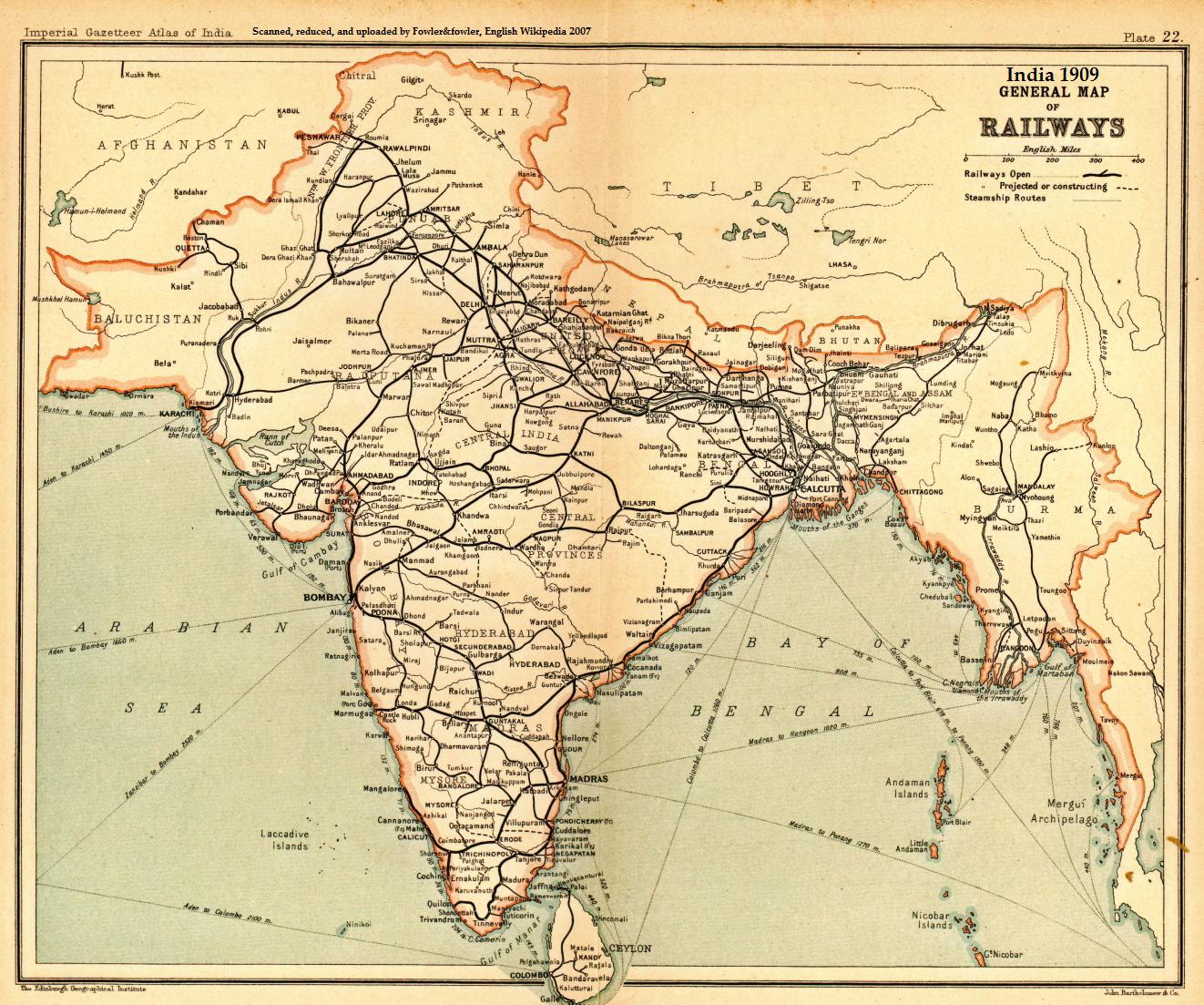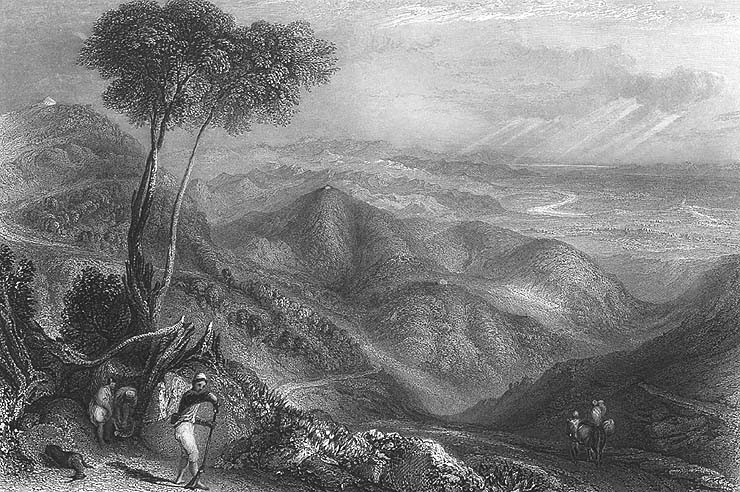|
Haldwani-Kathgodam
Haldwani ( Kumaoni: ''Haldvānī'') is the largest city of Kumaon. It is also the third most populous city and largest commercial market in the Indian state of Uttarakhand. Haldwani is said to be the financial capital of Uttarakhand, having the most commercial, economic and industrial activities of the state. Haldwani is located in the Nainital District, and is one of its eight Subdivisions. The Haldwani Urban agglomeration has 232,060 people as of 2011, and is the fourth most populous UA in Uttarakhand, after Dehradun, Haridwar and Roorkee. Being situated in the immediate foothills of Kumaon Himalayas, the Kathgodam neighbourhood of Haldwani is known as the "Gateway to Kumaon". Located in the Bhabhar region in the Himalayan foothills on the banks of the Gaula River, the town of Haldwani was established in 1834, as a mart for hill people who visited Bhabar during the cold season. The establishment of the Bareilly–Nainital provincial road in 1882 and the Bhojeepura–Kath ... [...More Info...] [...Related Items...] OR: [Wikipedia] [Google] [Baidu] |
Gaula River (India)
The Gaula River, or Gola River, is a river in India originating in the Lesser Himalayas. It is approximately long. The river is also known by the names of Kichha and Baigul (or more specifically Baigul West) in its lower course. It originates in the Paharpani Village of Uttarakhand state, and flows south past Kathgodam, Haldwani, Kichha and Shahi, finally joining the Ramganga River about northwest of Bareilly in Uttar Pradesh, Ramganga in turn is a tributary of the river Ganges. It is mainly a spring fed river; this river is source of water for Haldwani and Kathgodam. A beautiful dam exists over this river in Kathgodam. Mining This is also controversial due to illegal mining,. The government plans to install remote sensor anti-theft devices,. Ecology Over the years, due erosion and deforestation the Gaula catchment has become prone to landslides and the springs in it and overall rainfall have declined leading to reduction in its flow. The Gaula riverbed after it hits t ... [...More Info...] [...Related Items...] OR: [Wikipedia] [Google] [Baidu] |
Rohilkund And Kumaon Railway
Rohilkund and Kumaon Railway (R&KR) was a metre gauge railway in India covering a total network of 592 miles (953 km).Google Books "The Making of India: The Untold Story of British Enterprise" by Kartar Lalvani, page 218 Retrieved 8 December 2016 It was owned and worked by the Rohilkund and Kumaon Railway Company (registered 6 October 1882). The Rohilkund and Kumaon Railway was transferred to the and merged into the |
Kathgodam
Kathgodam is a suburb of Haldwani city in the Nainital district of Uttarakhand state of India. It used to be a part of the twin township of Haldwani-Kathgodam, and is immediately north of Haldwani. It is one of the important collection centres for forest products obtained from Kumaon Himalayas. History Literally meaning ''timber depot'', Kathgodam was a small village in 1901 with a population of 375, though its importance grew rapidly after the railway line was extended here in late 19th century, after it reached Haldwani in 1884. It was previously called 'Chauhan Patta' as it is still recorded in the land records. The advent of the residence of Dan Singh Bist nearby in Beer Bhatti, Jeolikote, and his setting up his major timber depot as the 'Timber King of India' as Chauhan Patta, led to it being called 'Kathgodam'. Similarly, Beer Bhatti is called thus as it was previously an area where the British India Corporation Limited pursued a Beer Brewery until 1924 when Dan Singh Bist p ... [...More Info...] [...Related Items...] OR: [Wikipedia] [Google] [Baidu] |
Bhojipura (Assembly Constituency)
Bhojipura Assembly constituency is one of the 403 constituencies of the Uttar Pradesh Legislative Assembly, India. It is a part of the Bareilly district and one of the five assembly constituencies in the Bareilly Lok Sabha constituency. First election in this assembly constituency was held in 1957 after the "DPACO (1956)" (delimitation order) was passed in 1956. After the "Delimitation of Parliamentary and Assembly Constituencies Order" was passed in 2008, the constituency was assigned identification number 120. Wards / Areas Extent of Bhojipura Assembly constituency is KC Shergarh, Devraniya NP & Shergarh NP of Baheri Tehsil; KCs Bhojipura, Rithora, CB Ganj, Rithora NP, Dhaura Tanda NP & Pipalsana Chaudhdhari (CT) of Bareilly Tehsil. Popular Village- Jadounpur is a village which was established in 1873 AD by two families, one of Bajajas (kade Ansari) and the other Chaudhdharis (unknown). Bajaj means one who sells clothes and Chaudhdhari is interested in politics; both the ... [...More Info...] [...Related Items...] OR: [Wikipedia] [Google] [Baidu] |
Nainital Road
Uttar Pradesh State Highway 37 or SH 37 (also called Nainital Road) is a State Highway in the state of Uttar Pradesh, India that connects Bareilly to Kichha, running through Baheri. History Earlier, before the separation of Uttarakhand, the road lead up to Nainital, covering a distance of 137 km (85 Miles) via Haldwani, kathgodam and was also a part of Bareilly-Almora-Bageshwar route. Route Uttar Pradesh State Highway 37 or Nainital Road, as it is called, starts from Kutubkhana in Bareilly and runs through 'Koharapeer Sabji-Mandi', Shrinathpuram Colony and 'Kodesia Railway Crossing' to reach Bareilly Mini Bypass (connecting it to Delhi - Lucknow National Highway 24 (India)) near Izzatnagar Railway Station. From there the road heads northwards passing the Bareilly Airport (or Trishul Air Base) before reaching Baheri. After reaching the border of U.P. at Kichchha, Uttar Pradesh State Highway 37 merges with National Highway 74 (India) (or Uttarakhand State Highway 49 ... [...More Info...] [...Related Items...] OR: [Wikipedia] [Google] [Baidu] |
Hill People
Hill people, also referred to as mountain people, is a general term for people who live in the hills and mountains. This includes all rugged land above and all land (including plateaus) above elevation. The climate is generally harsh, with steep temperature drops between day and night, high winds, runoff from melting snow and rain that cause high levels of erosion and thin, immature soils. Climate change is likely to place considerable stress on the mountain environment and the people who live there. People have used or lived in the mountains for thousands of years, first as hunter-gatherers and later as farmers and pastoralists. The isolated communities are often culturally and linguistically diverse. Today about 720 million people, or 12% of the world's population, live in mountain regions, many of them economically and politically marginalized. The mountain residents have adapted to the conditions, but in the developing world they often suffer from food insecurity and poor ... [...More Info...] [...Related Items...] OR: [Wikipedia] [Google] [Baidu] |
Bhabar
Bhabar or Bhabhar ( Kumaoni: bhābar) is a region south of the Lower Himalayas and the Sivalik Hills in Kumaon, India, containing some of the largest cities of Kumaon, Haldwani and Ramnagar, both in Nainital District. It is the alluvial apron of sediments washed down from the Sivaliks along the northern edge of the Indo-Gangetic Plain. Etymology The name ''Bhabar'' refers to a local tall-growing grass, ''Eulaliopsis binata'', used for the manufacture of paper and rope. Overview Bhabar plains are located in Kumaon. Bhabar is the gently-sloping coarse alluvial zone below the Sivalik Hills (outermost foothills of the Himalayas) where streams disappear into permeable sediments. The underground water level is deep in this region, then rises to the surface in the Terai below where coarse alluvium gives way to less permeable silt and clay. The Ganges River lies to the west and Sharda to the east. Being at the junction of Himalayas and the Indo-Gangetic Plain, Bhabar contains almost ... [...More Info...] [...Related Items...] OR: [Wikipedia] [Google] [Baidu] |
Roorkee
Roorkee (Rūṛkī) is a city and a municipal corporation in the Haridwar district of the state of Uttarakhand, India. It is from Haridwar city, the district headquarter. It is spread over a flat terrain under Sivalik Hills of Himalayas. The city is developed on the banks of Ganges Canal, its dominant feature, which flows from north–south through middle of the city. Roorkee is home to Asia's first engineering college Indian Institute of Technology Roorkee, formerly known as Thomson College of Civil Engineering. Roorkee is also known for the Roorkee Cantonment, one of the country's oldest military establishments and the headquarters of Bengal Engineer Group since 1853. A freight train ran in between Roorkee and Piran Kaliyar on 22 December 1851, this was two years before first passenger trains were started between Bombay and Thana in 1853 and 14 years after first freight trains ran in Chennai in 1837.irfca.org/docs/history/india-first-railways.html History Roorkee is listed ... [...More Info...] [...Related Items...] OR: [Wikipedia] [Google] [Baidu] |
Haridwar
Haridwar (; ) is a city and municipal corporation in the Haridwar district of Uttarakhand, India. With a population of 228,832 in 2011, it is the second-largest city in the state and the largest in the district. The city is situated on the right bank of the Ganges river, at the foothills of the Shivalik ranges. Haridwar is regarded as a holy place for Hindus, hosting important religious events and serving as a gateway to several prominent places of worship. Most significant of the events is the Kumbha Mela, which is celebrated every 12 years in Haridwar. During the Haridwar Kumbh Mela, millions of pilgrims, devotees, and tourists congregate in Haridwar to perform ritualistic bathing on the banks of the Ganges to wash away their sins to attain ''moksha''. According to Puranic legend, Haridwar, along with Ujjain, Nashik, and Prayag, is one of four sites where drops of ''amrita'', the elixir of immortality, accidentally spilled over from a ''kumbha'' (pitcher) while being carried ... [...More Info...] [...Related Items...] OR: [Wikipedia] [Google] [Baidu] |
Dehradun
Dehradun () is the capital and the most populous city of the Indian state of Uttarakhand. It is the administrative headquarters of the eponymous district and is governed by the Dehradun Municipal Corporation, with the Uttarakhand Legislative Assembly holding its winter sessions in the city as its winter capital. Part of the Garhwal region, and housing the headquarters of its Divisional Commissioner. Dehradun is one of the " Counter Magnets" of the National Capital Region (NCR) being developed as an alternative center of growth to help ease the migration and population explosion in the Delhi metropolitan area and to establish a smart city in the Himalayas. It is the third largest city in the Himalayas after Kathmandu and Srinagar. Dehradun is located in the Doon Valley on the foothills of the Himalayas nestled between Song river, a tributary of Ganga on the east and the Asan river, a tributary of Yamuna on the west. The city is noted for its picturesque landscape and slightly m ... [...More Info...] [...Related Items...] OR: [Wikipedia] [Google] [Baidu] |




.jpg)


